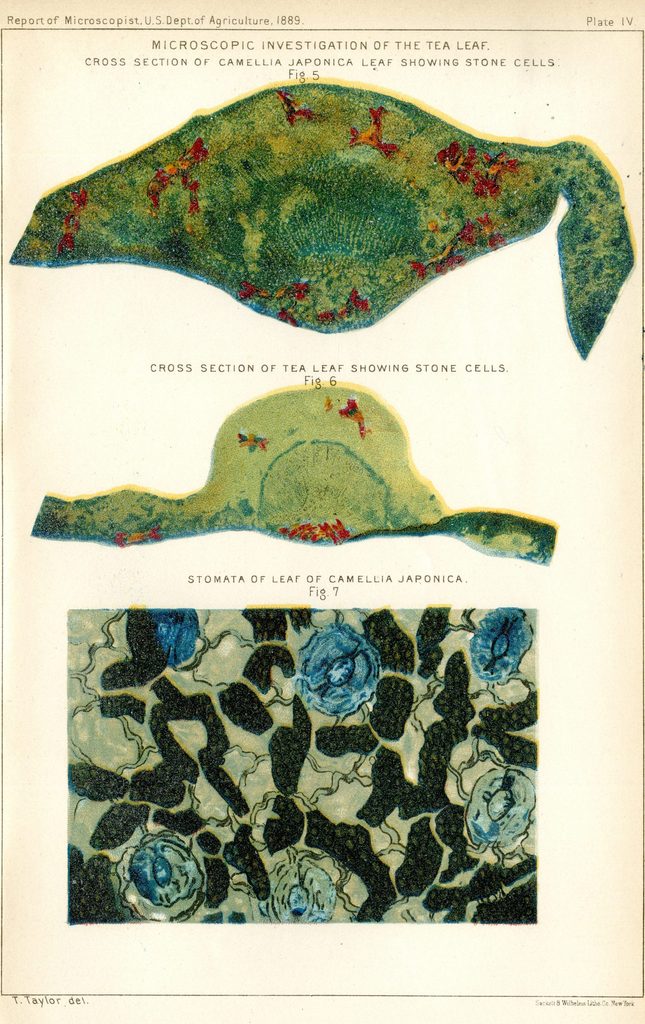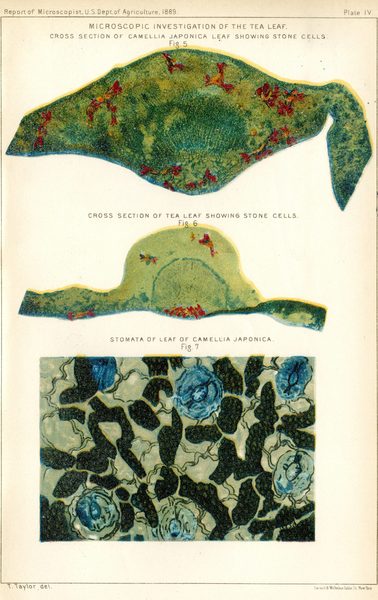
Lower Epidermis of Leaf Showing the Stomata and Chlorophyll Cells [Fig. 1]-
Microscopic Investigation of the Tea Leaf
Illustrated by T. Taylor
Printed by Sackett & Wilhelms Lith Co., New York
First Report of the Secretary of Agriculture- 1889
Washington: Government Printing Office, 1889
Gould Library Government Documents
The books on display here, all from the collections of Gould Library, reveal the beauty and order of hidden worlds. In these volumes, microscopic images are deployed for a variety of reasons: Sometimes their purpose is purely practical (to certify the purity of a sample of tea, or to facilitate the identification of diseased blood). In other cases, as in Felice Frankel’s close-up view of Velcro, their job is as much to inspire curiosity and wonder as it is to illustrate a scientific phenomena.
Microscopic Investigation of the Tea Leaf

Illustrated by T. Taylor
Printed by Sackett & Wilhelms Lith Co., New York
First Report of the Secretary of Agriculture- 1889
Washington: Government Printing Office, 1889
Gould Library Government Documents
“[The microscope] will be found particularly valuable in making examinations of what is sold for tea-dust, which may contain very little tea and consist mostly of raspberry leaves or other worthless substance purposely reduced to a fine powder to make detection difficult.”
Mr. Taylor, a microscopist, is evidently unapologetic in his disdain for the American consumer who, in his or her ignorance, deigns to swallow an adulterated cup of tea. Indeed, Taylor is chiefly concerned with the tea leaf and the economic, political, and cultural implications of this seemingly insignificant foodstuff. If Americans could revert back to drinking high-quality Japanese tea, Taylor suggests that relations between the two countries would be improved, better teas would be made available at lower prices, and the country would be a far better place overall.
1. p. 192




